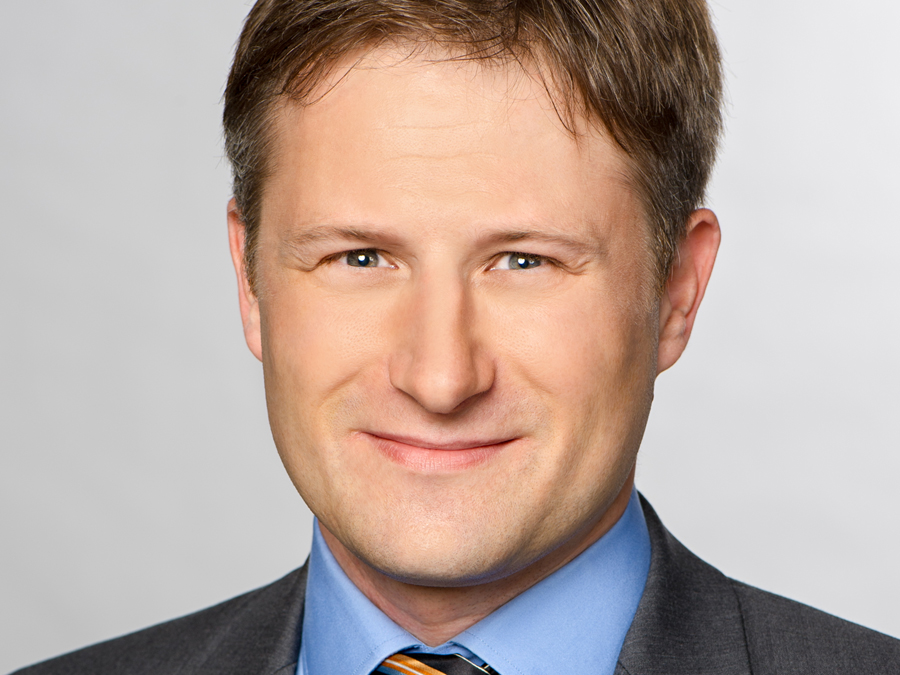Project "e-MOBILie": Interview with Prof. Franz Hagn
Saving as much energy as possible

How did you learn about the project?
Franz Hagn: During my appointment negotiations with the TU München. The appointment team pointed out the possibility of participating in the project. I was particularly interested in the novelty of the research concept. And since my family and I had just returned from the United States, we did do yet have a new flat, so it was a good match.
What precisely interests you in e-MOBILie?
Hagn: We are thinking about building our own house in the next few years using similar concepts. And, of course the innovative integration of the car and the energy system. I believe the combination of decentralized energy production and electromobility may prevail within a few years. We would like to make our small contribute to this idea.
Does the fact that you are a scientist make it easier for you to participate in the project?
Hagn: As a scientist I see things with a critical eye and am well versed in analytical thinking. In the back of my head I always have ideas of how things might be improved. This approach is essential for my research work in the field of biochemistry and I hope it will help me support the colleagues at TU München and BMW in their work.
Had you driven an electric car before your appointment?
Hagn: No, only a hybrid car. Electric cars are fun – the driving experience is completely different from combustion engine vehicles. The acceleration is constant. You simply step on the gas without changing gears. Since the car is silent, pedestrians often do not notice you and are then surprised. Of course, the range is still a problem. You always have to keep an eye on the battery charge. In this regard, I obviously hope the charging infrastructure for electric cars will be expanded.
What did you think when you first saw the house?
Hagn: It is a cube-shaped, modern, functional building with quite a futuristic look – befitting of the future-oriented concept behind the project. It definitely stands out in the neighborhood and I am sure many passers-by ask themselves, what is hidden inside.
Do you notice that you are living in a somewhat unordinary house?
Hagn: Actually, you don’t feel a thing unless you go into the utility room that houses the batteries, the required control units and the measurement technology. There is hardly any difference to modern low-energy houses. We have under-floor heating, a photovoltaic system and a heat pump. Only when you operate the house and start to deal with the systems do you notice the difference.
How does the energy management system work?
Hagn: The energy consumption of the largest appliances is coordinated centrally. All appliances can be registered via remote controlled sockets using Bluetooth. We define a timeframe in which certain devices should run – our washing machine is set to run between noon and 8 p.m. for example. Within these predefined time constraints, the energy management system determines the optimal point time for starting a given appliance: when the photovoltaic system has fully charged the battery storage, for example. Of course all appliances can be started manually, regardless of presets. This gives the owner full control over the system at all times. For the car, I set the app to ensure that the battery has at least 80 % charge by 8 a.m. The dishwasher runs at the night.
Is the system user-friendly?
Hagn: In principle, yes. But adapting the operating times of the various appliances is a bit tedious. When you try to select a time frame that has already begun, the appliance does not start until the next day. Then you need to go to the website and change the settings.
Have you developed a desire to save as much energy as possible?
Hagn: The system displays the current kilowatt consumption, as well as the consumption per day and month. There is a bar chart that shows how much external electricity is being consumed and how much energy we produce and store in the batteries. This illustrates clearly how much power is consumed by the various appliances and you do indeed develop an aspiration to keep the levels as low as possible. For example, I bought LED bulbs to save electricity. In addition, you try to set the operating windows so that power generated by the photovoltaic system is used.
Prof. Franz Hagn has been a Rudolf-Mössbauer Tenure Track Assistant Professor for structural membrane chemistry at the Department of Chemistry and a member of the Institute for Advanced Study since the Fall of 2014. Before that he was a postdoctoral associate at Harvard Medical School in Boston.
Technical University of Munich
Corporate Communications Center
- Stefanie Reiffert
- reiffert@zv.tum.de
- presse@tum.de
- Teamwebsite